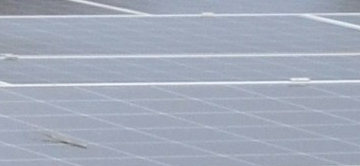The first directive liberalising the European electricity markets is celebrating its 20th anniversary at the end of the year. What conclusions can we draw from these two decades of liberalisation? Some observers, including famous ones,[1] argue that this experiment is a failure. At regular intervals, conferences are held in Brussels or other capitals to discuss new reforms deemed essential in order to save the European electricity industry. The European Commission suggests changes after consulting market players.[2]
This article defends a more optimistic position: the liberalisation of the European electricity industry accomplished most of its initial targets. Admittedly, improvements can and should be made, but we have come a long way. So, the glass is half full. In this time of doubt about the success of European integration, the electricity industry does give us grounds for some satisfaction.
1. The initial targets of the liberalisation of the European electricity industry
The European Union's forefathers had one simple idea in mind: strengthen relationships between European states to make war impossible. They believed - perhaps over-optimistically - that economic integration would inevitably lead to political integration, in other words the construction of a federal Europe. Gradually, every industry was integrated into the common market. In 1952, steel and coal were the first with the ECSC, followed by atomic energy with Euratom in 1957.[3] At the end of the 1990s, it was natural gas and electricity's turn to join the common market. The aim of liberalisation is simple: contributing to bringing peace to the continent by creating a common European market for electricity that would enable any consumer to buy megawatt-hours from any producer, wherever they are within the EU.
2. The difficulties of liberalisation
The difficulties to overcome in order to liberalise the electricity industry are immense.
The first difficulty is symbolic. Providing electricity to towns, factories and the countryside is probably the greatest technological achievement of the 20th century. Electricity is at the heart of developed economies and developing countries dream of rapid electrification. As one senior official at the French Department of Energy stated succinctly: "electricity is life"[4]. Even if this position is not scientifically correct (access to drinking water seems more important to human life), it sums up well citizens' relationship to electricity. It is seen as an essential commodity, hence different.
Additionally, electricity is associated with technological progress and the modernity it offers. This association also contributes to making electricity different from other goods in the collective psyche.
The second difficulty is political. In most EU member states, the electricity industry is structured around vertically integrated, national monopolies, often owned by national or regional governments. To liberalise, one therefore has to put an end to the electricity production and supply monopolies and, in certain countries, privatise major national companies. A reform of this magnitude requires strong and long-lasting commitment from politicians, and must have strong bi-partisan support.
The third difficulty is technical. Electricity is a non-storable commodity governed by specific physical laws. The entire European network is interconnected and synchronous. Metaphorically, at every point in the network, each installation beats the rhythm, as on a drum. All of the drummers have to be perfectly in sync. If one of them gets ahead or behind the others, the whole network may fall to pieces. So it is a much more delicate process to design and introduce a common market for electricity than it is for potatoes, cars or socks.
The fourth difficulty is economical. A general economic result, owed to Adam Smith, is that the integration of markets increases the total surplus. However, opening borders automatically creates winners (consumers in countries where prices were high before integration who can now pay less, producers in countries where prices were low before integration who can now access new markets) and losers (producers in countries with high prices who now face increased competition, and consumers in countries with low prices that are starting to increase). So it is important to implement policies to support the losers, made possible by the increase in overall surplus.
The last difficulty is cultural. The European electricity industry of the 1990s was dominated by engineers assisted by accountants. Electric power utilities, often monopolies, were operated like branches of the civil service rather than corporations. It was unclear whether the firms would be able to adapt to a competitive environment.
Looking at this list of difficulties, one understands that the fathers of the liberalisation of the electricity industry must have been incurable optimists (or totally oblivious) to go down this road. One can also see why it was not possible to carry out the operation in one go: it is not surprising that other texts were gradually added to the first directive.
3. Liberalisation's success: the glass half full
Liberalisation reached its initial objective: today, there is a working common market for electricity in Europe. At some hours of the year, when the transmission network is not constrained, a single power station sets the price for the whole European continent. For example, on Monday 11 April at 10 pm, the spot price for electricity was 27.86 €/MWh in France, Germany, Belgium, the Netherlands, Spain and Portugal. The price was higher in the United Kingdom (37.16 €/MWh) and in Northern Italy (29. 49 €/MWh), which are Europe's "electric peninsulas".[5] When the transmission network is congested, the constraints are managed efficiently by the market coupling process.[6]
The common electricity market perfectly illustrates the shared destiny of all European citizens. The wholesale price for electricity is currently very low, too low to remunerate production assets, in large part because German consumers have agreed to subsidise Renewable Energy Sources (RES). The wholesale price of energy in Germany is thus decreasing, and dragging down the prices in other countries. The choice made by German citizens affects all European consumers - and producers. Energy policies, which remain formally the domain of each member state, are de facto coordinated through the common wholesale markets.
It is undeniably a great success for the construction of Europe. Every consumer on the continent can purchase, directly or indirectly, from any producer on the continent. And conversely, every producer has direct or indirect access to a market of several hundreds of millions of customers. All of the electricity production and transmission assets are pooled and used efficiently. This was accomplished without any major technical hiccups: despite all of the difficulties mentioned above, the lights stayed on.
Of course, integration can be furthered. For example, the cooperation between transmission network operators could be strengthened, electricity prices must be differentiated within countries and not only across countries, and the integration must extend to intraday exchanges. But a significant portion of integration's gains have already benefited consumers -- thanks to a serious leg-up from taxpayers who unintentionally contribute to public funding distributed to certain technologies.
Liberalisation also led to a different way of sharing risks, discussed below.
4. The glass half empty: the arguments in favour of "market redesign"
In view of this resounding success, why are certain specialists in the sector calling for further reforms, a "market design 2.0"? Several arguments have been put forward.
Electricity suppliers' financial difficulties
Historic European electricity companies are facing extremely serious financial difficulties that threaten their very survival. The exact circumstances depend on the companies, but the reasons for these difficulties are similar: incumbent electric power utilities have not managed to transform themselves to operate in a competitive industry. They overinvested in prosperous years, without anticipating the less prosperous years that would inevitably follow. Some pursued adventurous international expansions, others engaged in expensive mergers/acquisitions that mainly benefited the sellers and their bankers, and yet others overinvested in power plants during the second half of the 2000s.
In particular, incumbent power utilities failed to anticipate the magnitude of Renewable Energie Sources (RES) penetration and their impact on the markets. Most believed that the high cost of renewables would curb their penetration, that the technical and economic rationale would prevail, and that the penetration of RES would be slow and controlled. They did not fully anticipate European policy-makers' - and to a certain extent citizens' - desire to finance the rapid renewal of the generation mix, with little concern for economic efficiency.
The financial outlook for historic European electricity suppliers is grim. This is how markets work: investors, and not users, pay the price for their errors. The contrast with the time before liberalisation is striking: during the 1980s, France had a significant electric surplus, the nuclear production facilities greatly exceeded demand. The cost of this overcapacity was passed on to consumers via the rates, in a non-transparent manner. Electricity suppliers can no longer transfer their losses to the community, and are therefore forced to depreciate unused assets. It is neither surprising nor amoral that companies that committed strategic errors are in difficulty. Tens of thousands of jobs will disappear, tens of thousands of our fellow citizens will have to rebuild their lives.[7] Society must make sure that the affected employees will be able to reintegrate into the economy.
To solve their financial issues, electricity suppliers are turning to their national governments, which mostly respond favourably, for several reasons. Firstly, some states are still shareholders in their national electricity supplier, and therefore have a strong incentive to see its financial health recover. Secondly, politicians are always sensitive to the risk of losing industrial jobs. Thirdly, politicians have become aware that they risk losing control over a highly symbolic industry. In this era of globalisation, in which they control so few forces and events, public authorities want to reaffirm their authority. And we are now seeing the pendulum swing back towards "State intervention" in the electricity industry.[8]
Security of supply
The first argument used by politicians to justify their "supervision" of the electricity markets is the security of supply. The term is particularly well-chosen, as it calls to mind long-term geostrategic issues, which are the historical responsibility of national authorities. In reality, the purpose of this intervention is "capacity adequacy", in other words dimensioning the production fleet to cover the peak demand. There is nothing geostrategic about it. The issue‡ is not guaranteeing the supply of primary energy for several decades, for example with long-term contracts to purchase natural gas, but simply ensuring that enough megawatts of capacity are installed.
Politicians are naturally ill at ease with market outcomes regarding installed capacity. They prefer an uninterrupted supply, which requires installing production capacities that are very rarely used but are available for exceptional circumstances. But if a capacity will almost never be used, it is not profitable, and investors will refuse to finance it.
The suggested approach is therefore to implement capacity mechanisms. We will not go into details here as this has already been discussed several times in previous posts. We will simply point out that one of market design 2.0's objectives is to guarantee that enough megawatts of capacity are installed... at the exact moment that the European continent is suffering from overcapacity.
The energy transition
The second argument used by politicians to justify their intervention is the energy transition. What could be more important for the future of humanity? As it involves correcting a market imperfection (in this case the presence of externalities related to CO2 emissions that cause global warming), public authorities have a legitimate reason to get involved.
The question is not to know whether an intervention is warranted, but rather what intervention is suitable to ease the transition towards a carbon-free economy? Where economists recommend a combination of a CO2 price and directed subsidies to accelerate the deployment of new technologies, politicians are back to their old tricks, opting for centralised planning where the production mix is decided in ministerial offices.
* * *
Electrification was the great industrial feat of the 20th century. In under twenty years, the European Union successfully integrated the national industries of twenty member states into a huge group of nearly 500 million consumers. It would be a shame if this still fragile construction fell victim to a clumsy reform. Rather than completely rethinking past successes, the market 2.0 should instead try to make market mechanisms function better for day-ahead transactions, real time adjustments, capacities, and greenhouse gas emissions.
[1] See for example the report by the French General Commission for Strategy and Foresight (2014) entitled “The Crisis of the European Electricity System Diagnosis and possible ways forward” .http://www.strategie.gouv.fr/sites/strategie.gouv.fr/files/archives/CGSP_Report_European_Electricity_System_030220141.pdf . This post arose from discussions with Christophe Brognaux, Jean-Pierre Hansen, Cécile Maisonneuve, Jacques Percebois, et Yves Smeers. The views we express here do not reflect those of the other participants to these discussions.
[2] See the July 2015 consultation at https://ec.europa.eu/transparency/regdoc/rep/1/2015/FR/1-2015-340-FR-F1-1.PDF
[3] http://eur-lex.europa.eu/legal-content/FR/TXT/HTML/?uri=URISERV:xy0022&from=FR;
http://eur-lex.europa.eu/legal-content/FR/TXT/HTML/?uri=URISERV:xy0024&from=FR
[4] In an interview with one of the authors of this article, March 2016.
[7] We have found no analyses of the total job losses. Some announcements from specific companies suggest that the figure of hundreds of thousands of jobs lost is regrettably realistic: RWE and E.ON in 2012, http://www.ft.com/intl/cms/s/0/f3f8ece2-d012-11e1-a3d2-00144feabdc0.html - axzz464TKqo25, RWE in Great Britain in March 2016 http://www.ft.com/intl/cms/s/0/abfba856-e4f6-11e5-ac45-5c039e797d1c.html - axzz464TKqo25, EDF in March 2016 http://uk.reuters.com/article/uk-edf-employment-britain-idUKKCN0V00IK, General Electric in January 2016 http://www.wsj.com/articles/ge-to-cut-6-500-jobs-in-europe-at-former-alstom-businesses-1452684621
[8] For the United Kingdom, see http://www.dieterhelm.co.uk/sites/default/files/The%20return%20of%20the%20CEGB_2.pdf






Add new comment